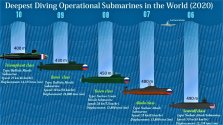asif iqbal
Banned Idiot
I can't quote everyone and we are going off topic so mods can move this into relevant thread please
but there is a lack of understanding here between commercial and warship building
China has been building wings and fuselage for Airbus for decades commercial airline, yet ARJ 21 and C919 are proving to be decades long programmes in the making when they do home made, and even home means the landing gears are still outsourced as is over 1000s of other parts
UK has retained what is core to its industry, it cant make steel but it has just bought out Sheffield Forgemasters after £2.6 million take over from MoD, why ? because they can make military grade steel
UK cant make commercial ships yet it can build the Worlds most advanced nuclear submarines, Astute Class + Vanguard Class and now the Dreadnaught class
UK never built a carrier in 3 decades, the industry was dead they said and out comes 2 x 65,000+ ton Carriers with the largest 5th generation naval air wing in the World
Warships for Navy is not related to Commercial shipbuilding two totally different games, yes off course there is overlap as both are same industry but just because one can build containers and tankers doesnt mean they can build warships, btw Egypt has been building commercial ships and they bought the 2 x Mistral Class from France which were set for the Russians who themselves couldn't build LHD
and whoever said Japan and South Korea can build aircraft carriers, yes they can but will they work? we are taking about aircraft carriers here not a re-fitted tanker, both Japan and South Korea are needing the help of the UK for their carrier programmes
lets take for example just the deck coating requirement for the F35B heat exhaust at 1500C, a company called Monitor Coatings came to find the solution, a Thermal Metal Spray System consists of a metallic compound of aluminium and titanium , Specialist robots were developed to apply the coating. Powdered metal was fired through a jet of plasma at temperatures of around 10,000C. The molten droplets then flatten and solidify, creating a tough coating
the programme took 2 years of testing, and endless remaking of the metallic compound
and yes I know what the reply will, oh yes China can do it , South Korea can do it and so can Japan but they wish not too
well I can tell you these things come from a gene pool of knowledge decades in the making which these counties simply dont have
Rosyth in Scotland did it and Govan is doing the Type 26 programme the list goes on
btw Turkey also has a very good shipbuilding programme, they bought Spanish design for their LHD
Easy to claim things without knowing the details of how a warship is actually built
but there is a lack of understanding here between commercial and warship building
China has been building wings and fuselage for Airbus for decades commercial airline, yet ARJ 21 and C919 are proving to be decades long programmes in the making when they do home made, and even home means the landing gears are still outsourced as is over 1000s of other parts
UK has retained what is core to its industry, it cant make steel but it has just bought out Sheffield Forgemasters after £2.6 million take over from MoD, why ? because they can make military grade steel
UK cant make commercial ships yet it can build the Worlds most advanced nuclear submarines, Astute Class + Vanguard Class and now the Dreadnaught class
UK never built a carrier in 3 decades, the industry was dead they said and out comes 2 x 65,000+ ton Carriers with the largest 5th generation naval air wing in the World
Warships for Navy is not related to Commercial shipbuilding two totally different games, yes off course there is overlap as both are same industry but just because one can build containers and tankers doesnt mean they can build warships, btw Egypt has been building commercial ships and they bought the 2 x Mistral Class from France which were set for the Russians who themselves couldn't build LHD
and whoever said Japan and South Korea can build aircraft carriers, yes they can but will they work? we are taking about aircraft carriers here not a re-fitted tanker, both Japan and South Korea are needing the help of the UK for their carrier programmes
lets take for example just the deck coating requirement for the F35B heat exhaust at 1500C, a company called Monitor Coatings came to find the solution, a Thermal Metal Spray System consists of a metallic compound of aluminium and titanium , Specialist robots were developed to apply the coating. Powdered metal was fired through a jet of plasma at temperatures of around 10,000C. The molten droplets then flatten and solidify, creating a tough coating
the programme took 2 years of testing, and endless remaking of the metallic compound
and yes I know what the reply will, oh yes China can do it , South Korea can do it and so can Japan but they wish not too
well I can tell you these things come from a gene pool of knowledge decades in the making which these counties simply dont have
Rosyth in Scotland did it and Govan is doing the Type 26 programme the list goes on
btw Turkey also has a very good shipbuilding programme, they bought Spanish design for their LHD
Easy to claim things without knowing the details of how a warship is actually built

